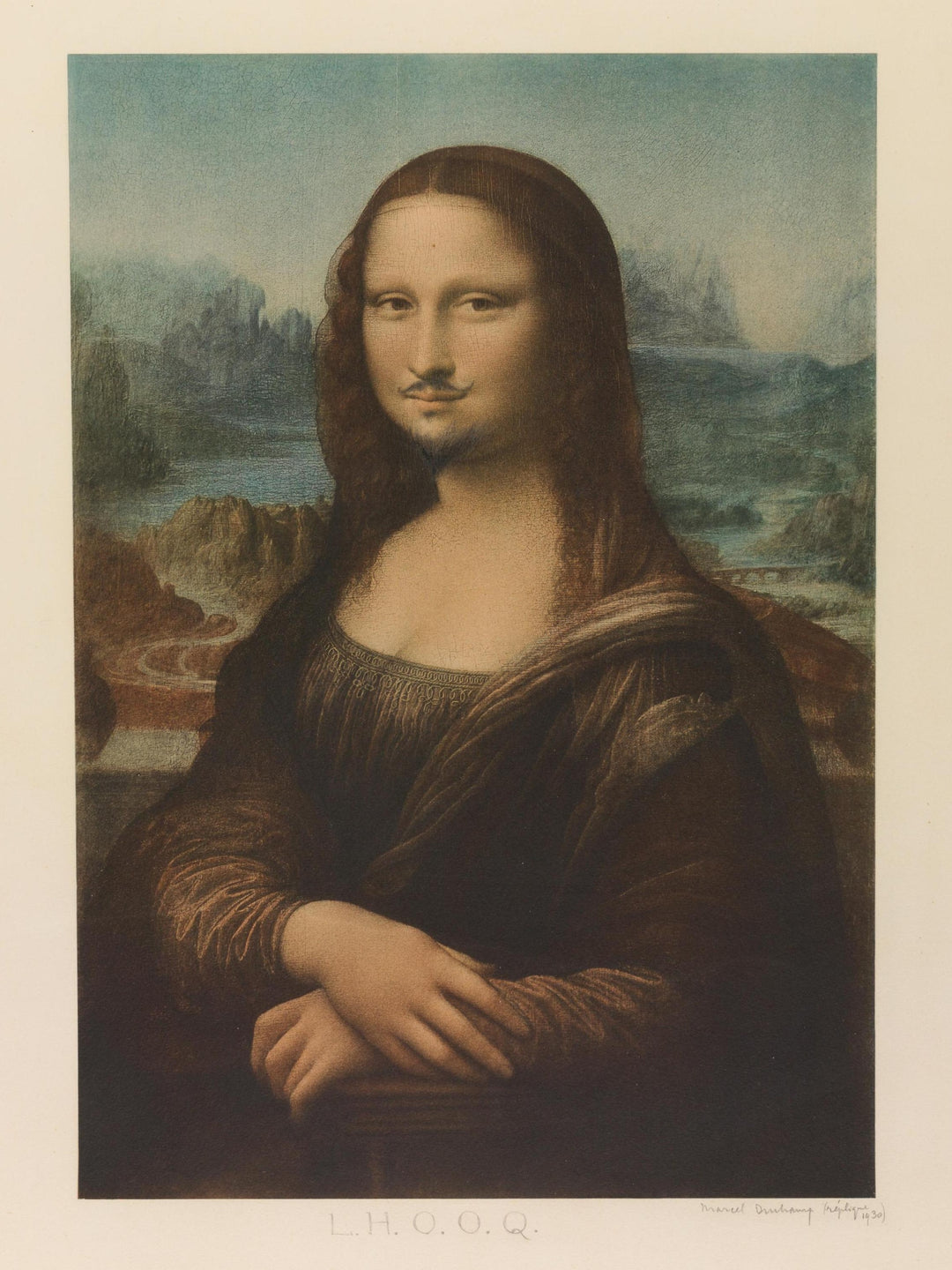
L.H.O.O.Q. - Marcel Duchamp
| Author: | Duchamp |
|---|---|
| Title: | L.H.O.O.Q. |
| Original location: | Musée National d'Art Moderne, Paris, France |
| Year: | 1930 |
In 1930, Marcel Duchamp once again challenged art history with L.H.O.O.Q., an iconoclastic reinterpretation of the Mona Lisa in which the mustache and goatee added to her face not only ridicule the Renaissance ideal of beauty, but also question the concept of originality in the age of mass reproduction. The title, a French phonetic pun, hints at a mocking double entendre, reflecting the provocative essence of Dadaism, a movement of which Duchamp was one of the leading exponents.
Unlike the avant-gardes that preceded it, such as Cubism or Futurism, which still valued formal exploration, Dadaism did not seek to build but to destroy the traditional hierarchies of art, exposing their arbitrariness. By intervening on a cheap postcard of the world's most famous painting, Duchamp subverts the notion of the sacred in art, turning the untouchable into an object of ridicule. With this gesture, he anticipates the concept of the rectified "readymade" (or "found art"), where a found object is minimally altered to give it new meaning.
The impact of "L.H.O.O.Q.", also known as "L.H.O.O.Q. or La Joconde", extends far beyond its era: it influenced conceptual art, pop art by Andy Warhol, and the practice of appropriationism by artists like Sherrie Levine, who questioned authorship in a world saturated with reproduced images. On a symbolic level, the masculinization of the Mona Lisa seeks to satirize the ideal of a masterpiece printed more than a thousand times, which often becomes a soulless image. To play with identity, authorship, and the value a person imprints on an object, Duchamp explored with his alter ego Rrose Sélavy, merging art, gender, and provocation.
Now exhibited at the Musée National d’Art Moderne in Paris, L.H.O.O.Q. remains a challenge to the viewer: is it a masterpiece, a joke, an insult, or all of the above? Duchamp understood that art does not reside solely in the material execution of a work, but in the idea that underpins it. In a twenty-first century where images are constantly recycled and reinterpreted, the mustachioed Mona Lisa still smiles.